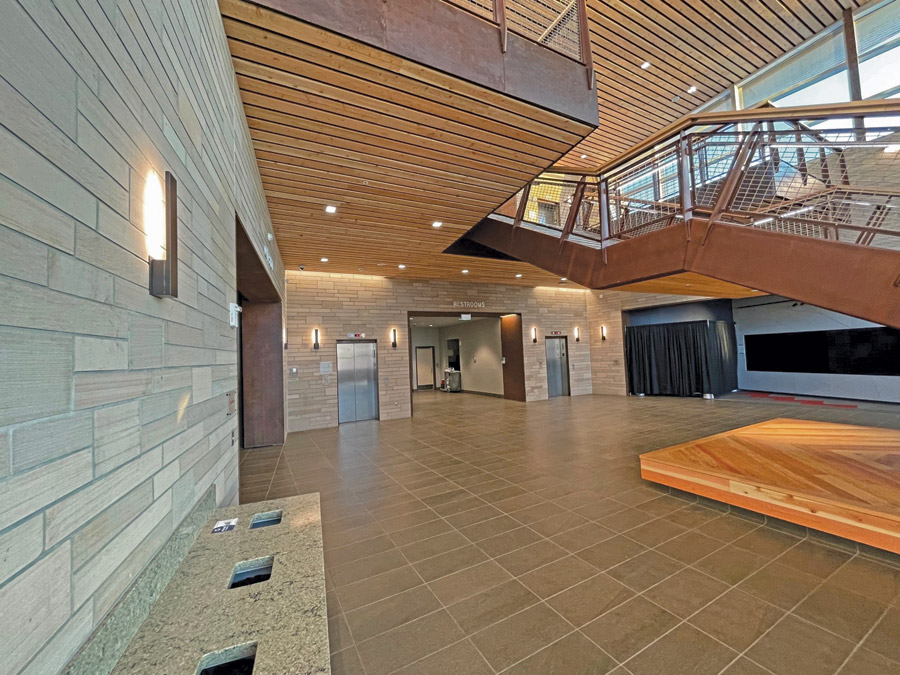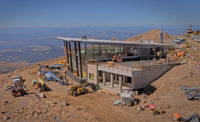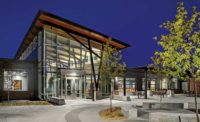Pikes Peak Visitor Center
Colorado Springs
BEST PROJECT
Submitted By: ICI LLC
Owner: Pikes Peak –America’s Mountain
Lead Design Firm: GWWO Architects; RTA Architects
General Contractor: GE Johnson Construction Co.
Specialty Contractor: ICI LLC
The Pikes Peak Visitor Center matches the beauty of the surrounding environment while also providing new ways to understand and enjoy the great outdoors. Visitors to the 38,000-sq-ft building are greeted with a two-story grand stair entry with views that look south over Mount Rosa, the summit where Zebulon Pike first saw in 1806 the peak that would be named after him.
The architecture of the pavilion highlights the relationship between the two landforms—the view from the top of the steps to the lobby angles down at 3.5 degrees to Mount Rosa, matching the angle on the upward slope of the roof. Stairs down to the main level appear to fold down out of the mountain as visitors descend to the exhibits, a dining area, gift shop and restrooms. Warm, rustic colors and natural materials such as locally sourced timber further connect the interior to the landscape.
The serenity of the summit belies its harsh environment. All exterior framing had to be engineered to withstand winds in excess of 200 mph. During interior construction, the contractor hung multiple framing clouds to safely carry the weight of metal ceiling panels suspended above visitors. Meticulous quality control ensured that the correct number of wires were attached to these clouds to support their weight.

Photo courtesy of Pikes Peak America’s Mountain
Workers also spent many hours crafting the beetle-kill wood ceiling above the grand staircase to ensure spray foam insulation work was completed during the mountain’s short summer construction season, thus allowing interior work to continue into the winter. The ceiling required 8 in. of spray foam sandwiched with two 8-in. layers of concrete. Because mountaintop temperatures dip below freezing even during the summer, the spray foam trailers were heated to a minimum 40°F. Despite measures to mitigate lightning, one strike managed to significantly damage key electronics on a spray rig, requiring emergency shipment of replacement components.
The entire project team took pride in contributing to a landmark project, particularly because it was Colorado’s first building to meet Living Building Challenge certification standards. All materials, including water and waste, were recycled.





Post a comment to this article
Report Abusive Comment